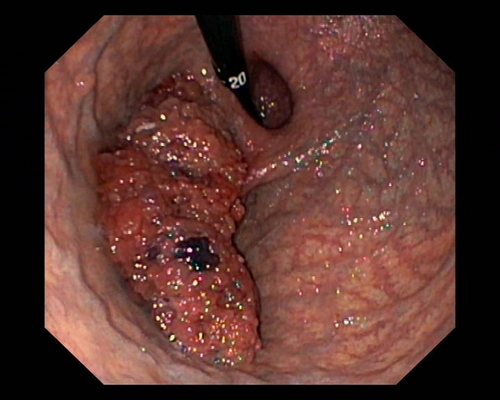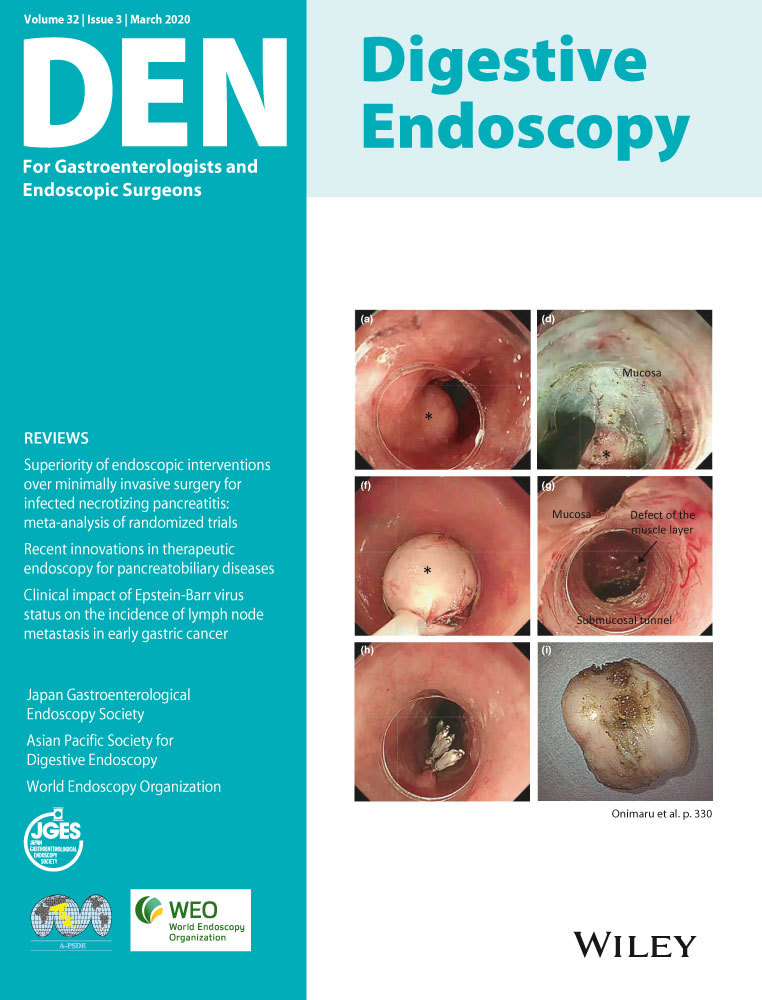Endoscopic resection of a giant gastric fundus adenoma with high-grade dysplasia by a multi-step endoscopic mucosal resection and submucosal dissection hybrid technique
Abstract
Watch a video of this article
Brief explanation
A 73-year-old man was admitted to our hospital with epigastric pain, anemia (hemoglobin 10.9 g/dL) and weight loss (8 kg in 6 months). Esophagogastroduodenoscopy (EGD) showed a gastric fundus polyp approximately 15 cm length (Figs 1,2). Random polyp biopsies showed a tubular-type adenoma with low-grade dysplasia (LGIEN). Gastric mucosal biopsies were negative for Helicobacter pylori and atrophy.1 Surgical excision would have implied the potential risk of cardiac insufficiency or necessity for gastrectomy. According to the votum of our interdisciplinary board and at the patient’s request, we decided against surgery and laparoscopic endoscopic cooperative surgery (LECS) and proceeded to endoscopic polypectomy.2, 3 Endoscopic submucosal dissection (ESD) to remove the adenoma en bloc in a single session would be the desired approach in terms of histological assessment, reduction of (delayed) endoscopy-related complications and patient comfort. Lacking full view over the adenoma base and due to poor accessibility, we did not primarily apply ESD but chose a multi-step approach (Video S1 and S2). First, we removed the adenoma body by piecemeal hot snare polypectomy. Next, we removed the adenoma base by a combination of ESD and endoscopic mucosal resection (EMR). Eventual histology showed a pyloric-type adenoma with mainly LGIEN and no signs of invasive growth. High-grade dysplasia (HGIEN) comprised less than 10% of polyp volume. We did not encounter any serious endoscopy-related complications. Follow-up EGD after 5 and 11 months showed a well-healed resection site without adenoma remnants. Conclusion: In rare cases, gastric adenomatous polyps can gain enormous size. Modern gastrointestinal endoscopy provides a powerful arsenal of tools in setting up individual therapeutic strategies in uncommon cases like this one. In our patient, we succeeded in removing a giant adenoma with HGIEN by a multi-step EMR-ESD hybrid technique, sparing the patient a surgical intervention or even gastrectomy.


Authors declare no conflicts of interest for this article.
Acknowledgment
We would like to thank Prof. Dr Marieta Toma, Institute for Pathology, University of Bonn, Bonn, Germany, for providing the histological images of the polyp shown during the video.




